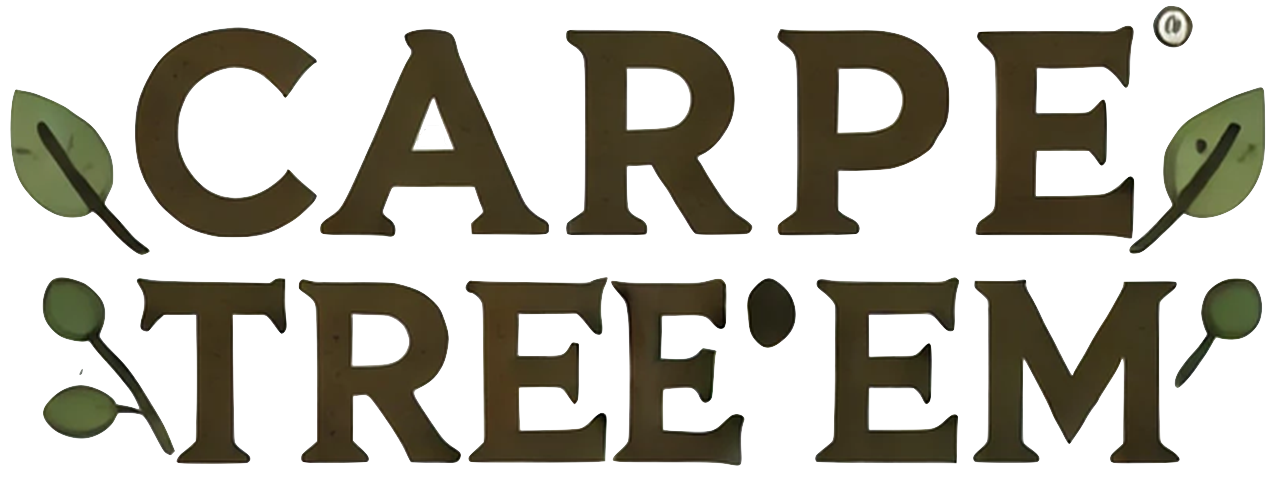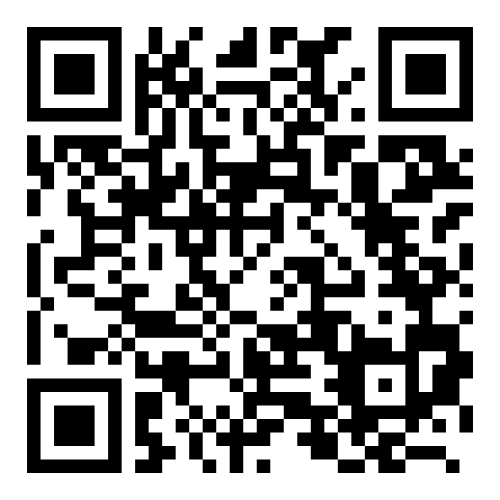Birch Tree Decline in the West Kootenay: Homeowner Guide
Understanding and Managing Bronze Birch Borer Infestations
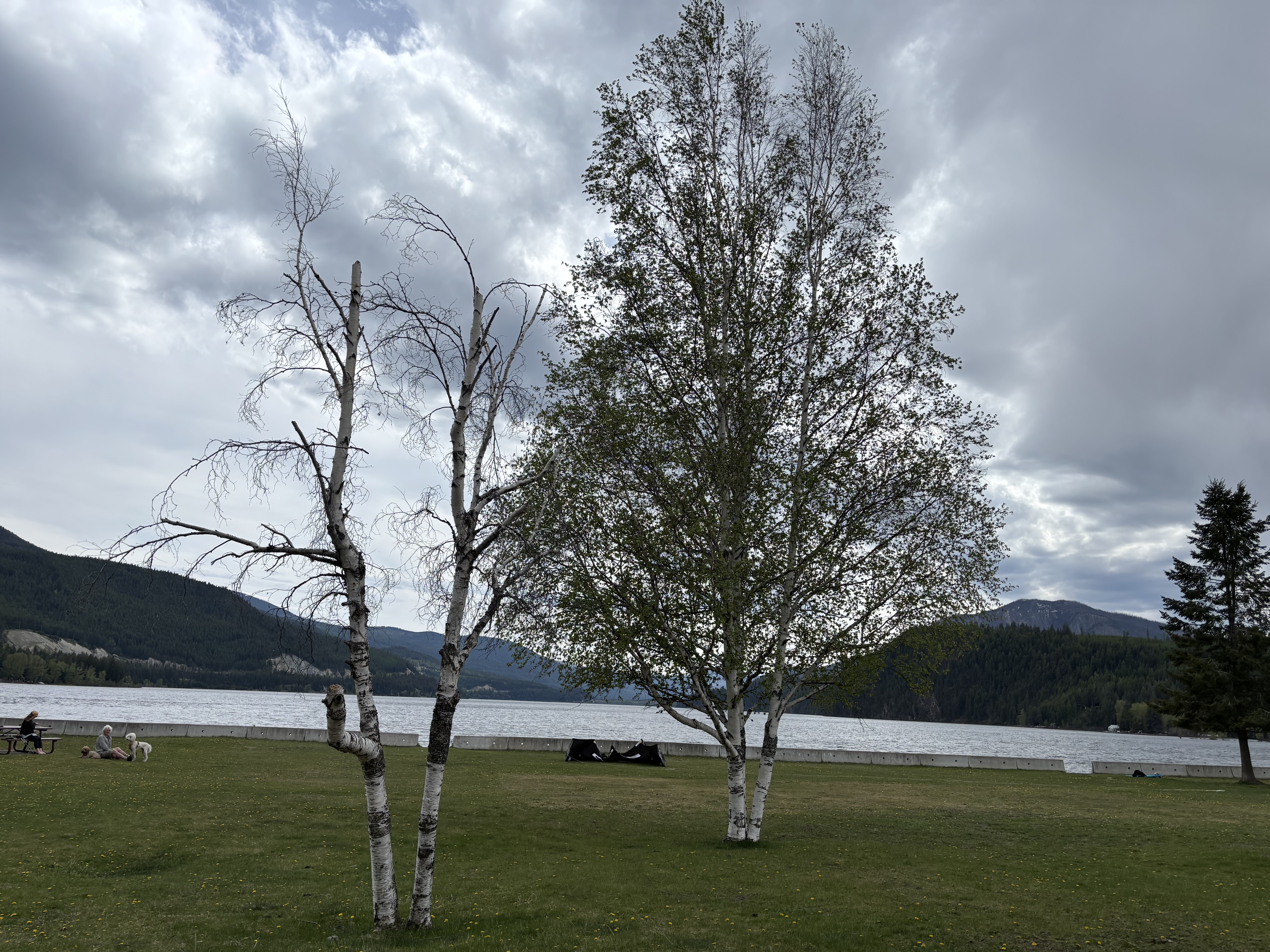
Figure 1: The birch decline crisis in the West Kootenay - the tree on the left shows advanced bronze birch borer damage with extensive dieback, while the tree on the right still retains much of its canopy. Without treatment, the healthier tree will likely progress to the same condition as the severely declining tree.
Birch trees in the West Kootenay (Nelson, Trail, Castlegar, Salmo, Slocan, etc.) are experiencing widespread decline. This guide is designed to help homeowners recognize birch health problems and take action. We begin with an accessible summary of symptoms and care tips, then progress into technical details for those interested in deeper information.
Key Points
- Symptom Checklist: Look for thinning or yellowing foliage in the upper crown, dead branches (especially at the top), holes in the bark, or mushroom-like growths on trunks. These can indicate pest infestation or decay.
- Main Culprits: The native bronze birch borer beetle is a primary killer of stressed birches, often assisted by birch leafminers (insects that brown the leaves) and opportunistic fungi that rot wood. Even sapsucker birds can contribute by drilling rows of sap wells in the bark.
- Why It's Happening: Paper birch (Betula papyrifera) is sensitive to drought and stress. Recent hotter, drier summers and erratic winters in the Kootenays have weakened many birch, leaving them with "limited defensive processes". Stressed birches cannot fight off insects and diseases as well, leading to a decline syndrome.
- Action Overview: Watering your birch deeply during dry spells is one of the best preventative measures. Professional treatments like trunk injections with systemic insecticides can protect high-value trees. Pruning out dead limbs improves safety and tree appearance. In worst cases, full removal may be necessary.
- Know the Rules: Many Kootenay municipalities ban "cosmetic" pesticide use. However, treating a tree to save its life may be exempt.
- Tree Value: Healthy birch trees provide shade, wildlife habitat, and even property value benefits. A mature tree can add 10–19% to a home's value, save energy (reducing cooling costs by up to 30%), and each year absorb about 50 lbs of CO₂ from the atmosphere. These benefits are lost when a tree dies, so there is value in preserving your birch if possible.
Common Symptoms of Birch Decline
Homeowners should regularly inspect their birch trees for the following symptoms of decline:
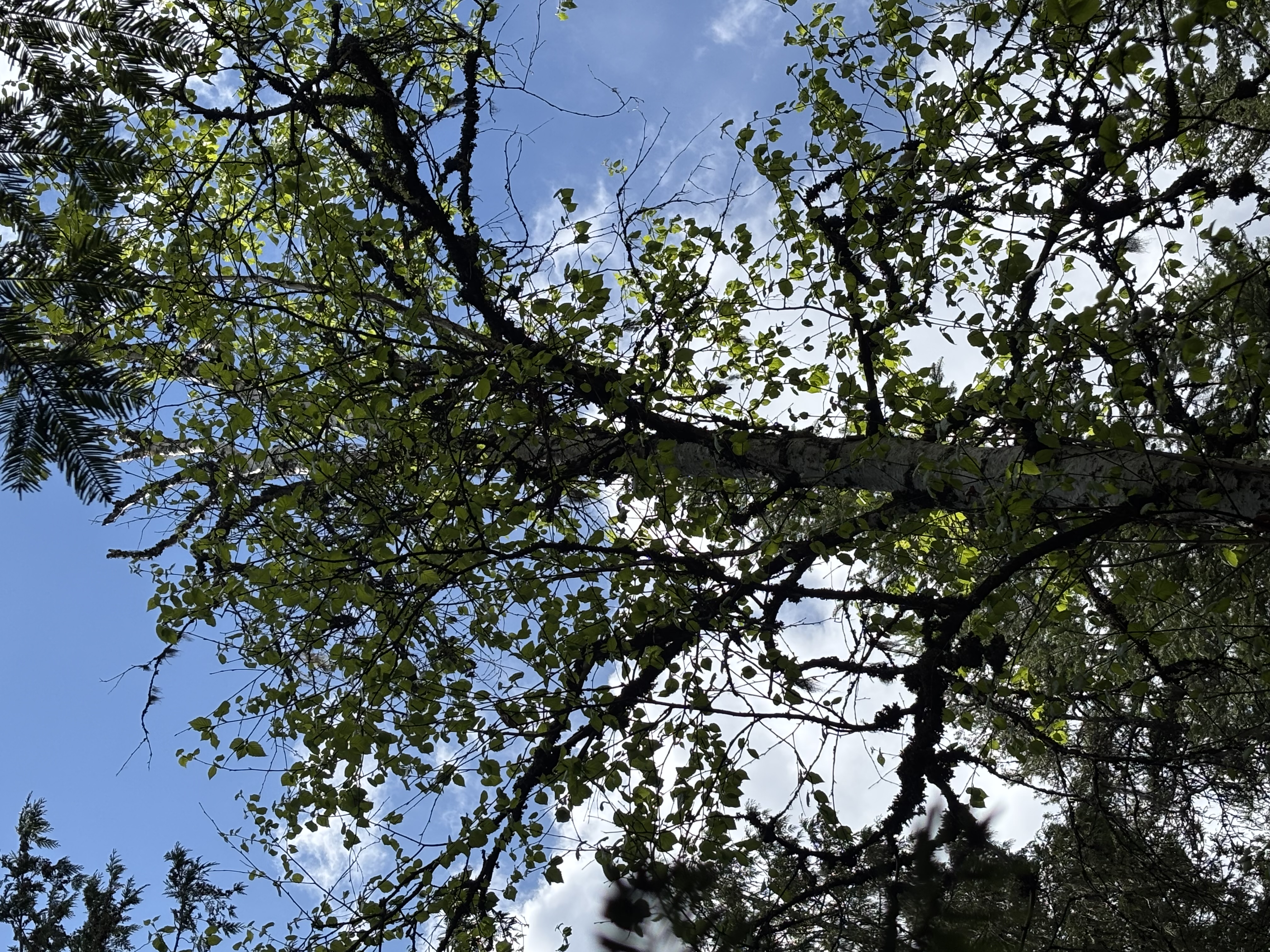
Figure 2: Early decline symptoms - thinning canopy and reduced leaf density in the upper crown are often the first visible signs of bronze birch borer stress.
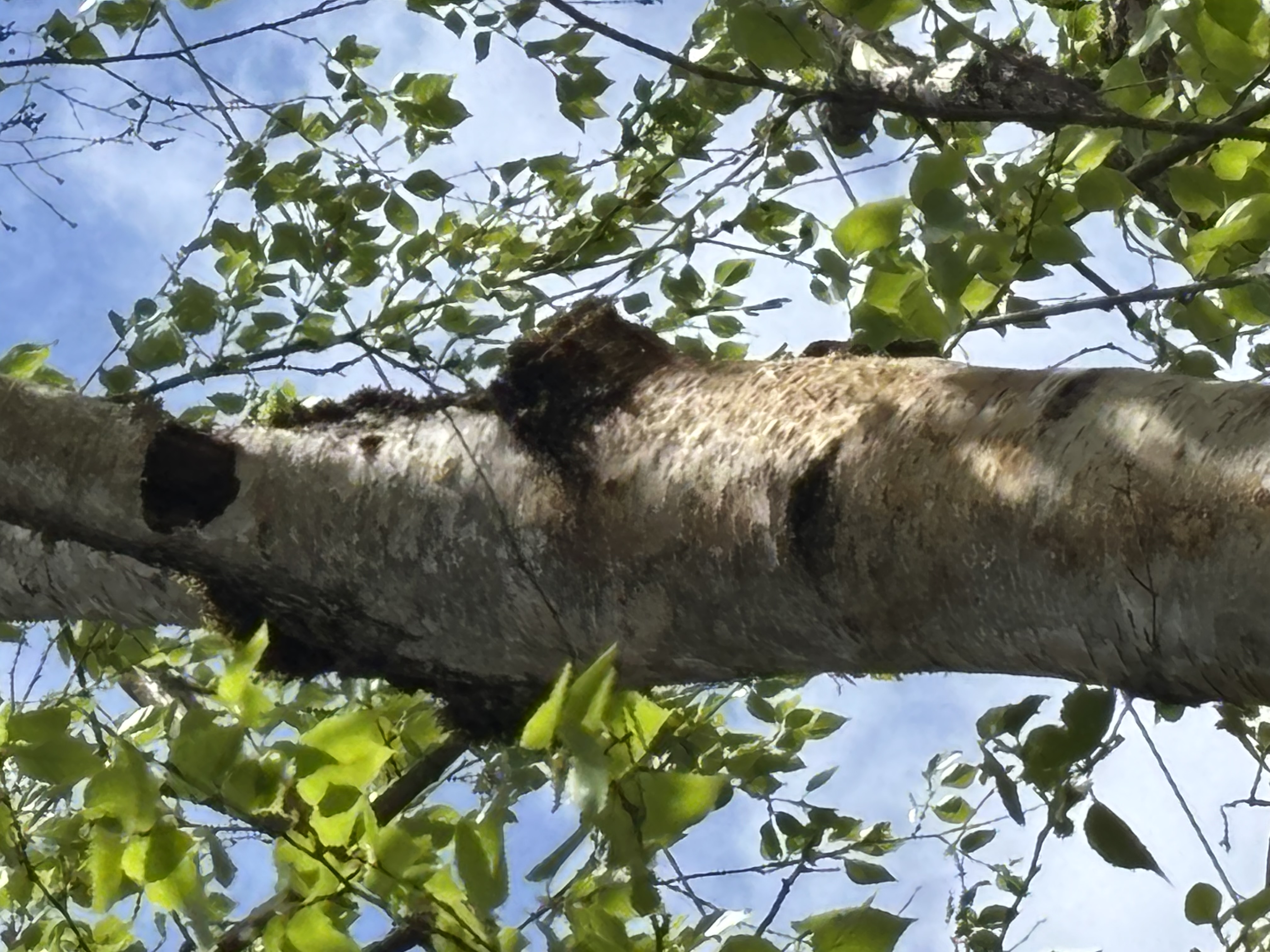
Figure 3: Progressive crown thinning - as the infestation advances, dieback spreads throughout the canopy, not just the top.
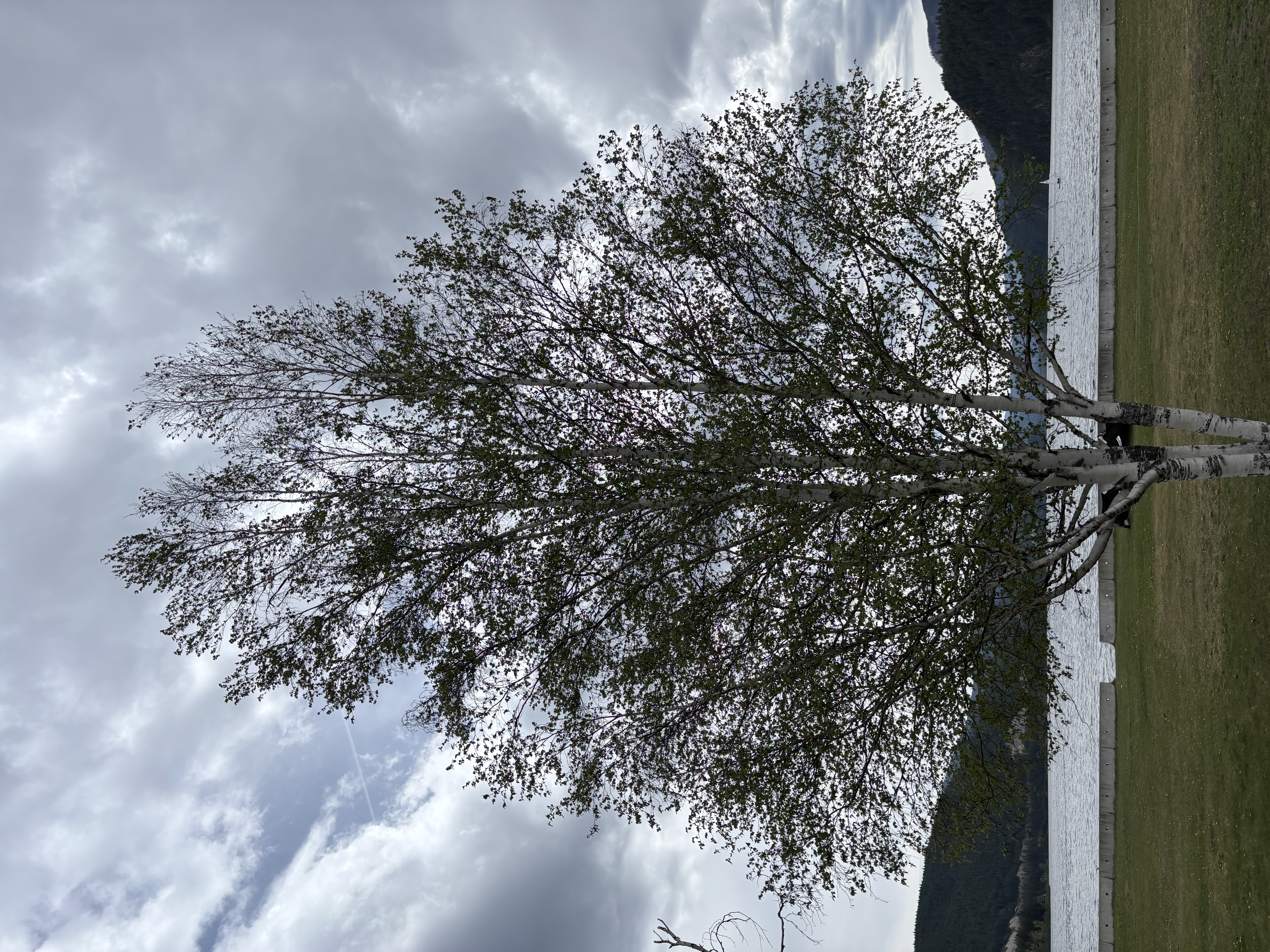
Figure 4: Top-down dieback pattern - bronze birch borer typically kills the upper crown first as larvae disrupt water flow to the highest branches.
- Thinning Canopy and Dieback: The upper crown (top of the tree) starts to thin out and turn yellow or brown. Often the topmost branches die back first. Lower branches may still have green leaves while the top is bare or brown. This top-down dieback is a hallmark of bronze birch borer attack.
- Dwarf or Chlorotic Leaves: Leaves might be smaller than normal and look chlorotic (pale yellow) if the tree is under attack. Early in an infestation, leaves on certain branches wilt or yellow prematurely.
- Bronze Birch Borer Signs: Check the trunk and larger branches for D-shaped exit holes about 5 mm across. These are created by adult borers emerging from under the bark. The holes have a flat edge (D-shaped) and may ooze rust-colored sap. You might also see winding, raised ridges on the bark from larvae tunneling underneath. Patches of bark may look lumpy or swollen over larval galleries. In advanced cases, loose bark or woodpecker pecking (as they dig for larvae) might be visible.
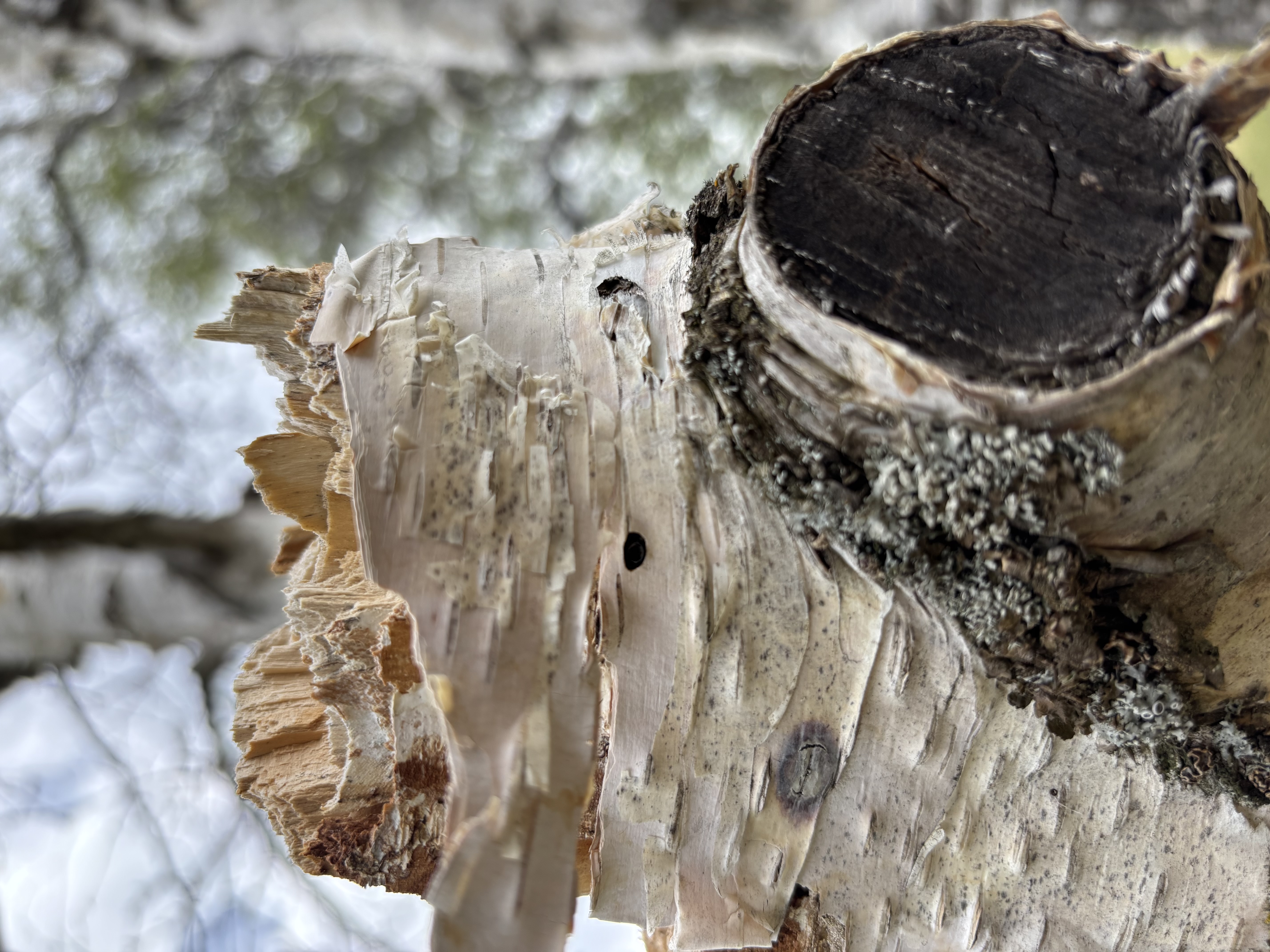
Figure 5: Severe borer damage - broken branch with exposed decaying wood and what appears to be a D-shaped exit hole, indicating advanced infestation and structural failure.
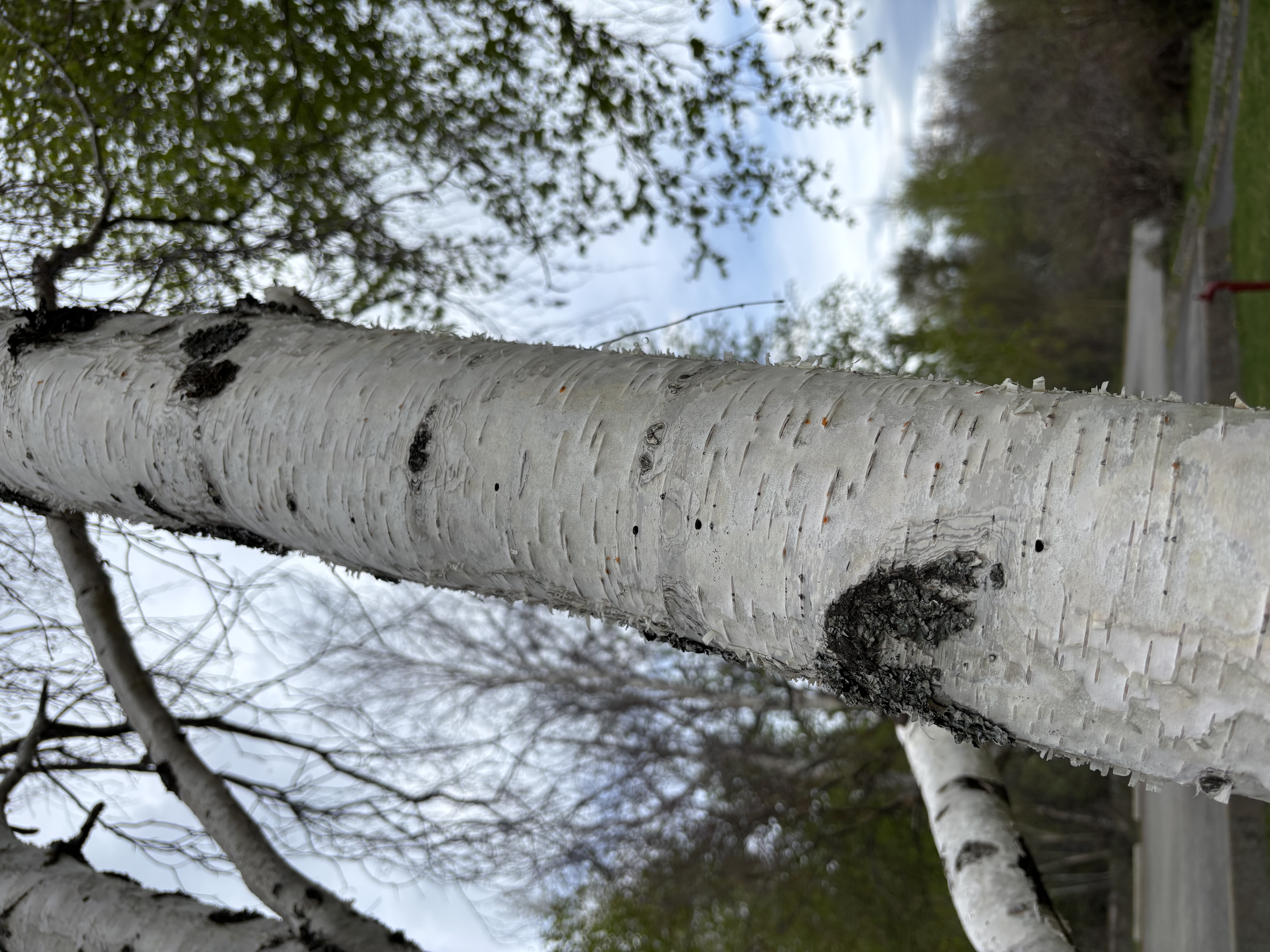
Figure 6: Stressed bark texture - drought and environmental stress create bark abnormalities that make trees more susceptible to bronze birch borer attack.

Figure 7: External bark symptoms - raised ridges and discoloration indicate extensive larval galleries beneath the surface, often accompanied by woodpecker damage.
- Birch Leafminer Damage: Look at the leaves for brown blotches or translucent "mines." Birch leafminer larvae live inside the leaf, eating the inner tissue. This causes irregular brown patches; when held to light, mines look paper-thin. Multiple mines can merge and turn the whole leaf brown. Damage is often worst on the uppermost new leaves in spring. If you see many browned leaves each year, the cumulative defoliation weakens the tree.
- Fungal Conks: Watch for fungal fruiting bodies (conks or mushrooms) on the trunk or major branches. Two common decay fungi on birch are the tinder fungus (Fomes fomentarius) – a hard, hoof-shaped gray bracket – and the birch polypore (Fomitopsis betulina) – a brownish-white pancake-like fungus. These typically appear on already dying or dead portions of the tree. Their presence means internal wood is rotting.
- Sapsucker Holes: Neat rows of small round or square holes in the bark are likely from yellow-bellied or red-naped sapsuckers (woodpeckers). Sapsuckers drill these shallow wells to feed on sap (and the insects attracted to it). A few rows of holes won't kill a healthy birch, but repeated heavy drilling can girdle parts of the trunk, causing stress or dieback.

Figure 8: Sapsucker damage - these uniform rows of holes are created by woodpeckers feeding on sap. While not usually fatal alone, extensive drilling can stress already vulnerable trees.
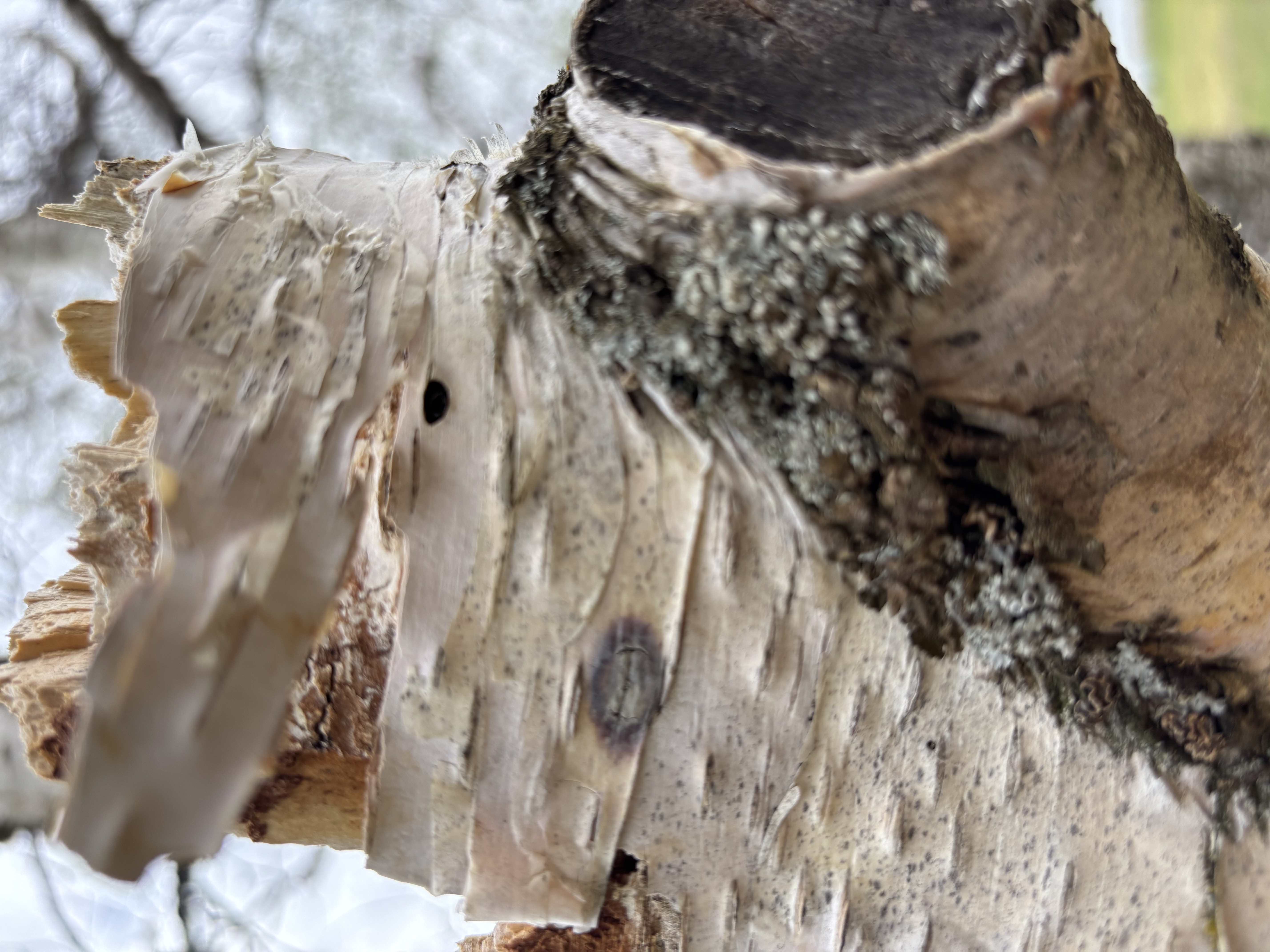
Figure 9: Individual branch mortality - as borer galleries disrupt water and nutrient flow, individual branches die and lose their bark, creating safety hazards.
- Armillaria Signs: If birch roots are affected by Armillaria root rot (common in Kootenay forests), you might see honey-colored mushrooms at the base in fall, or beneath the bark a white fan of fungal mycelium. Armillaria typically attacks trees already weakened by something else.
About Bronze Birch Borer (Agrilus anxius)
| Pest Identification |
Scientific Name: Agrilus anxius Common Name: Bronze Birch Borer Type: Wood-boring beetle (Buprestidae family) Description: Adult beetles are slender, olive-bronze to black in color, about 7-12mm long. Larvae are white, legless grubs with flattened bodies. |
|---|---|
| Life Cycle |
Duration: Generally completes development in one year Adult Emergence: Adults emerge from infested trees in late spring to early summer (May-June). They chew D-shaped exit holes in the bark. Egg Laying: Females lay eggs in bark crevices on stressed birch trees. Each female can lay dozens of eggs. Larval Stage: Larvae tunnel under the bark through the cambium layer, creating winding galleries that disrupt the tree's vascular system. They feed throughout summer and fall. Overwintering: Larvae overwinter inside the tree in chambers in the wood, pupating in spring before emerging as adults to complete the cycle. |
| Signs & Damage |
|
Why Birches Are Dying: Susceptibility and Causes
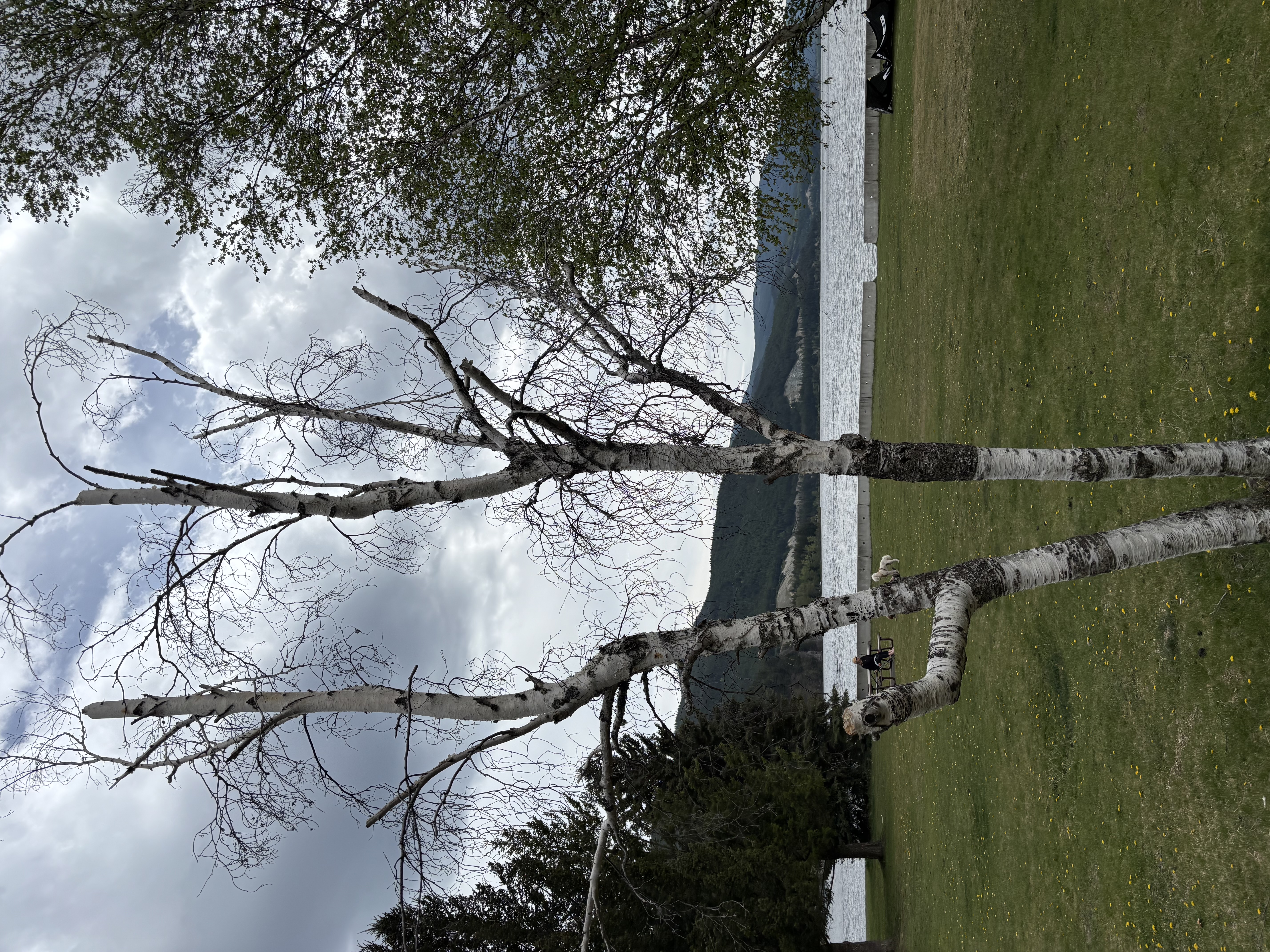
Figure 10: Regional birch decline - multiple trees showing stress across the landscape indicates widespread environmental factors (drought, temperature extremes) that predispose trees to borer attack.
Birches are inherently susceptible trees in our region due to a combination of biology and environment. Understanding why they decline can help you decide on management:
- Birch Biology & Stress: Paper birch is a relatively short-lived pioneer species. It grows fast in moist, cool conditions – but that means it has shallow roots and high water needs. In drought or heat, birch trees become water-stressed very quickly, leading to reduced growth and weakened natural defenses. The West Kootenay has seen summers with drought stress and temperature extremes, which "likely reduced tree vigour" and predisposed birches to pests.
- "Decline Disease" Complex: Unlike a single disease, birch decline is a syndrome involving multiple factors. Researchers have identified an insect–pathogen complex: bronze birch borer + leaf miners + root rot fungi, all contributing to birch die-off in southern BC. Drought and freeze-thaw damage set the stage, then leafminer defoliation weakens the tree further, then borers invade and kill the tree's water pipelines under the bark, and decay fungi like Fomes or Armillaria finish off the structural wood.
- Birch Defense Limitations: Trees naturally try to defend against infections by "compartmentalization" (the CODIT principle). Birches, however, are moderate to weak compartmentalizers. They do not wall off decay as strongly as some other species. When borers chew through the phloem, birch will attempt to produce callus tissue around the wounds, but if the tree is stressed, this response is too slow.
- Imported Landscape Birches: Many ornamental birches (like European white birch, Betula pendula) planted in Kootenay yards are even more susceptible to bronze birch borer than our native paper birch. White-barked European and Himalayan birches are "severely attacked" in North America, whereas native paper birch has some resistance (though not immunity).
Bottom line: Birches are facing a perfect storm of stress and pests in the West Kootenay. With attentive care (especially watering) and timely intervention (insect management or pruning), you can sometimes break this cycle and extend the life of your birch.
Management Strategies for Declining Birch
1. Preventive Care: Watering and Mulching
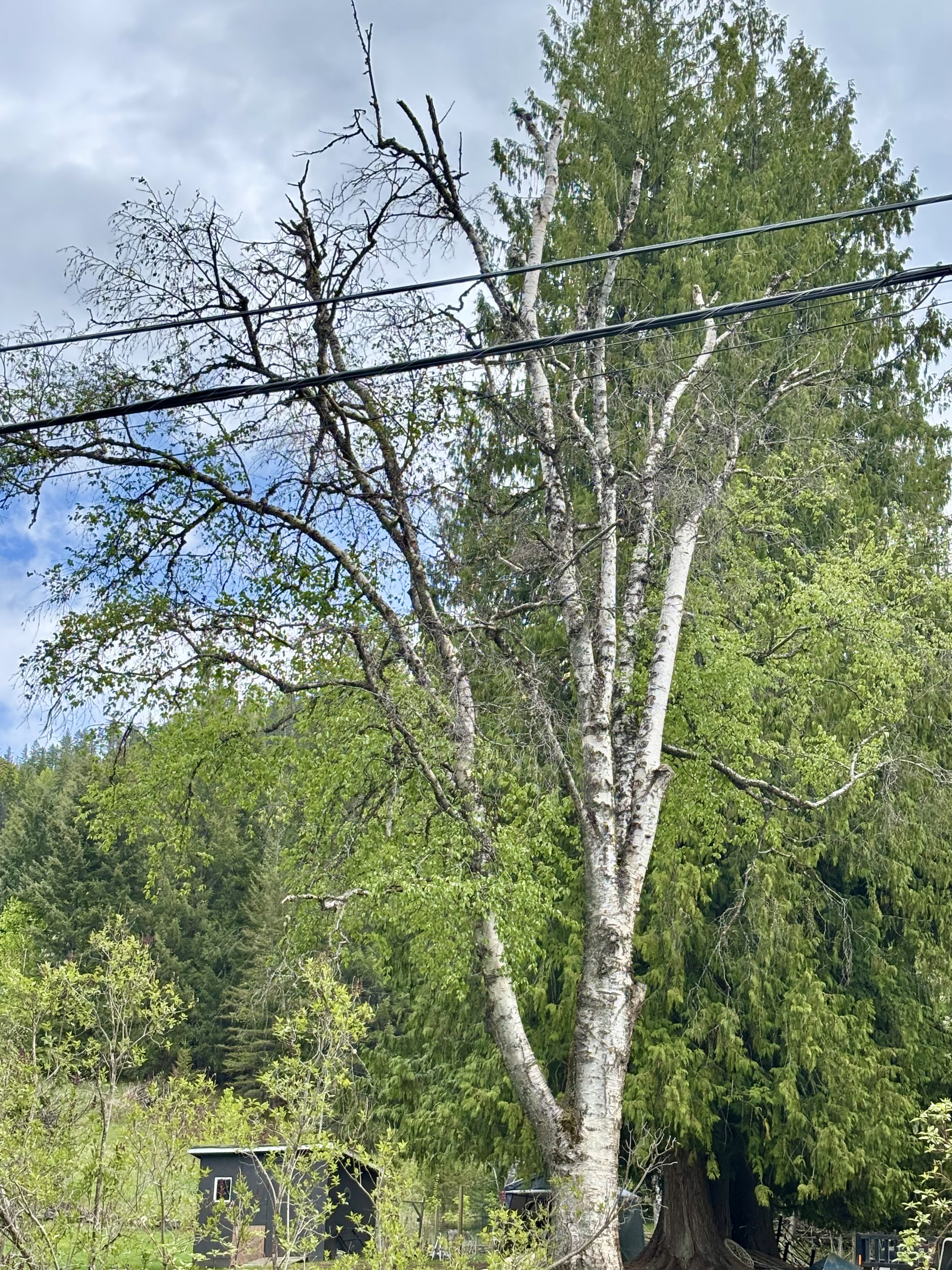
Figure 11: Birch with severe decline. Recommend remove and replace.
- Deep Watering: In droughty summer periods, give your birch a good soak. Water slowly with a soaker hose or trickle at the dripline of the canopy. Aim for moisture penetrating 12–18 inches deep. Do this once a week during dry spells (more if extremely hot).
- Mulching: Apply a layer of mulch (wood chips or bark, 5–10 cm thick) around the root zone (avoiding direct contact with the trunk). Mulch helps retain soil moisture and moderate soil temperature.
- Avoid Injury: Mechanical injuries (like lawnmower or weed-whacker hits to the trunk) can weaken birch defenses. Protect the trunk base and avoid major wounds especially in spring when borers are flying.
2. Insecticidal Treatments – Trunk Injection
- Emamectin Benzoate/TreeAzin Injections: Systemic insecticides can be injected into the trunk to protect birch from borers and leafminers. They are typically injected once every 1-2 years in late spring just before the adult borer flight.
- How It Works: An arborist will drill small holes near the base of the trunk and use a pressurized injector to deliver the insecticide into the tree's xylem. The tree then circulates the product up into the leaves and branches.
- Efficacy: Systemic injections can literally be lifesavers for a birch in early-mid decline. For example, if ~30% of the crown is dying from borer but the rest is okay, injecting can kill existing larvae and protect from reinfestation.
3. Pruning and Sanitation
- Prune Out Dead Wood: Remove dead branches promptly for safety and to improve appearance. This won't bring parts back, but it prevents dead limbs from falling and can also remove some borer larvae.
- Timing – Avoid Spring Wounds: If possible, do major pruning in late fall or winter when beetles and diseases are inactive. Birches pruned in May-June (when borers are flying) may attract female borers to the fresh cut area.
- Dispose of Infected Material: If you cut off borer-infested limbs, destroy or properly dispose of the wood. Do not stack fresh birch firewood near other birches – borers can still emerge from cut wood!
4. Tree Removal and Replacement
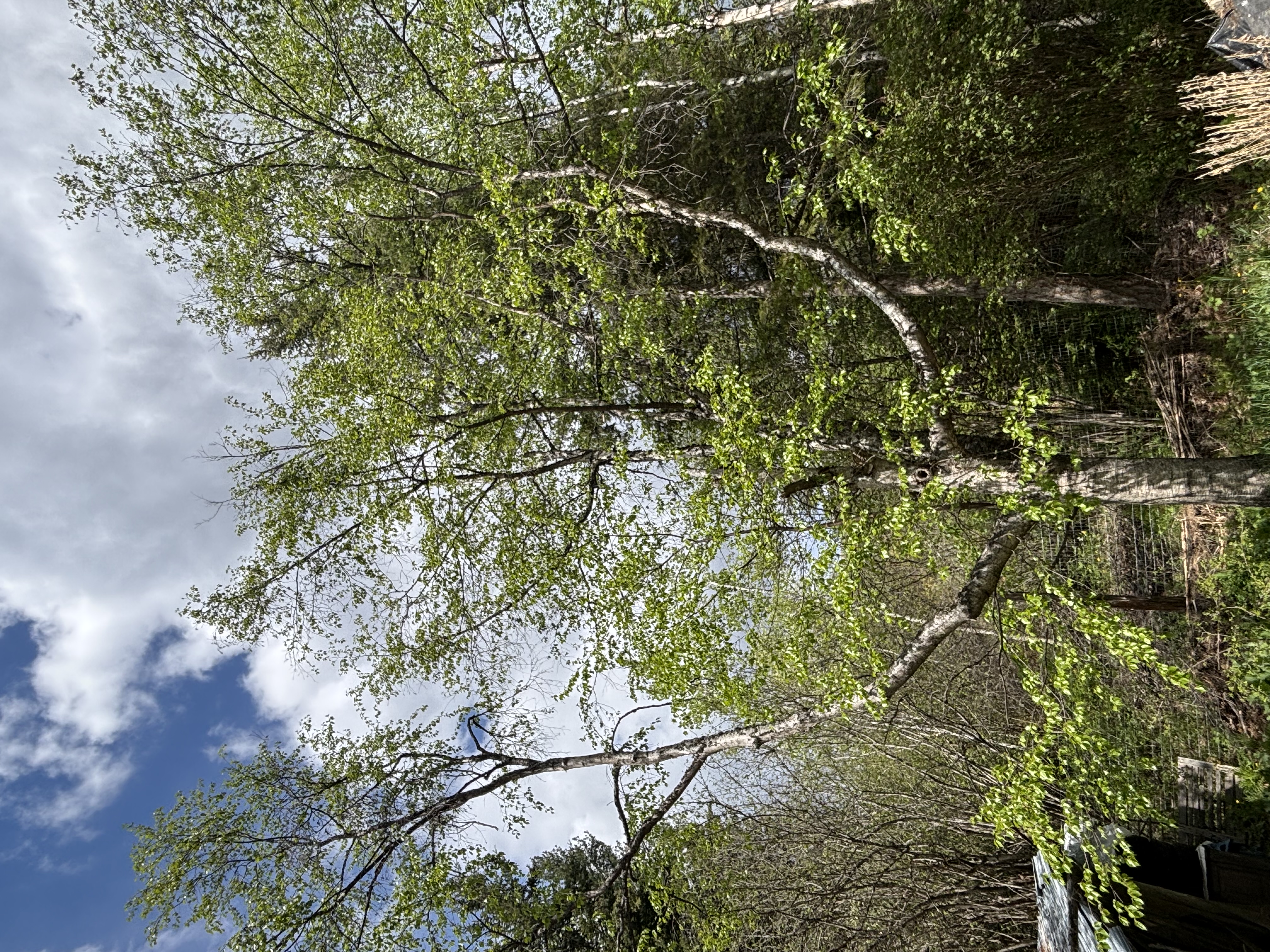
Figure 12: Beyond recovery - this birch has lost most of its canopy and poses a safety hazard. Trees in this advanced state of decline should be removed promptly.
If a birch is in advanced decline or poses a hazard, removal may be the wisest course.
- When to Remove: Consider removal if more than half the crown is dead, or if the tree has extensive trunk decay, or if it's a safety risk (dead tree near a house, power lines).
- Replacement Tree Choices: If replacing, consider a resistant species such as River birch (Betula nigra) which is much more borer-resistant, or choose a different kind of tree altogether that is better suited to the site.
Tree Value and Ecosystem Services
Healthy trees provide numerous benefits – some tangible, some intangible:
- Property Value & Aesthetics: Real estate studies in Canada have shown that mature trees can add 5-15% to a property's value. Buyers often gravitate to homes with established trees for beauty, curb appeal, and shade.
- Energy Savings: A medium-to-large birch provides dappled shade in summer that can reduce air conditioning costs by ~20–30%. The cooling effect of one big tree has been compared to running 10 room-size AC units for 20 hours.
- Carbon Sequestration & Air Quality: A single mature tree can absorb roughly 50 pounds of CO₂ per year. Trees also filter air pollutants, improving local air quality.
- Stormwater Management: The canopy of a birch intercepts rain, and the root system helps water infiltrate the soil. This reduces runoff and erosion.
- Biodiversity & Habitat: Birch trees support many insects, birds, and mammals as a keystone species in our ecosystem.
All these benefits underscore why the effort to care for and possibly invest in saving a declining birch is worthwhile. It's not just about sentiment; there are real economic and ecological returns.
Contact Information
For questions or to schedule a consultation about your birch tree, contact Carpetree Consulting at 778-655-3741 or email sapport@carpetree.com (yes, that's "sapport" – we love tree sap!). We're here to help you keep your trees healthy and safe.
